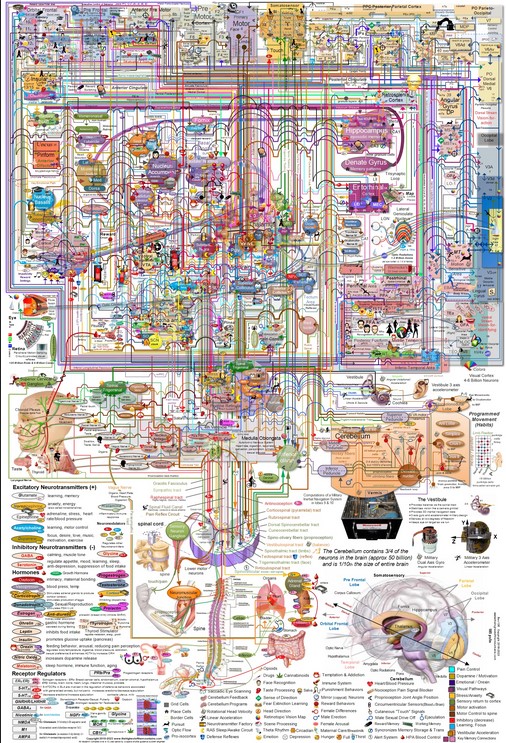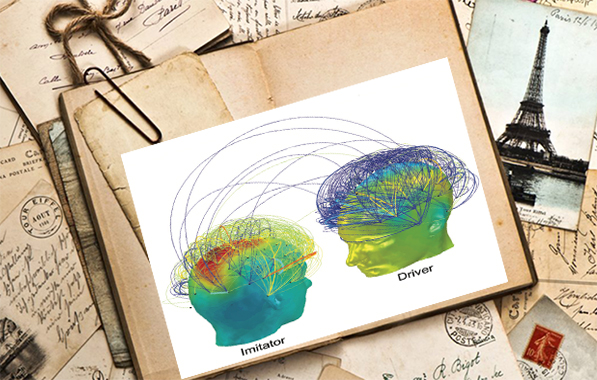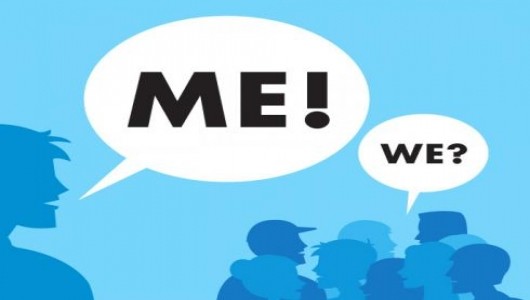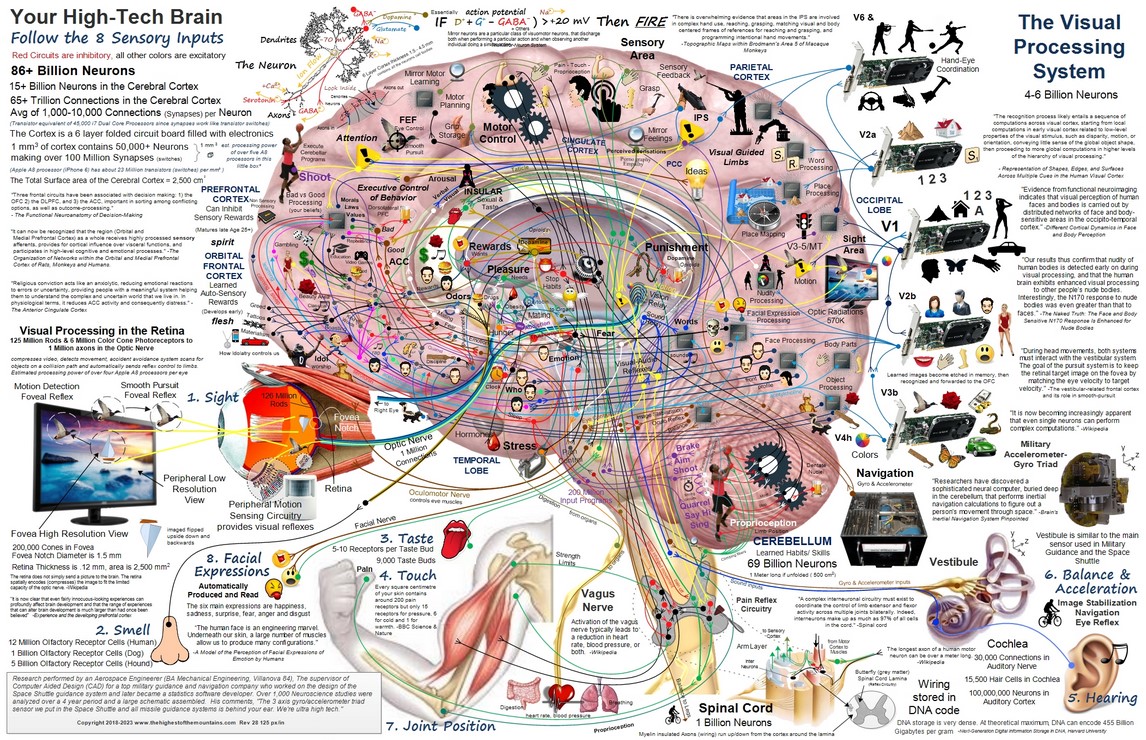Thursday, 4 April 2024
The Brain Is Not a Space Shuttle
 Recently, someone made me aware of an impressive graphic that attempts to use current neuroanatomical data to show how the brain’s circuits are interconnected, somewhat like the graphics that biochemists use to represent cellular metabolism.
Recently, someone made me aware of an impressive graphic that attempts to use current neuroanatomical data to show how the brain’s circuits are interconnected, somewhat like the graphics that biochemists use to represent cellular metabolism.
I have never before seen any schematic representation of the brain’s circuits that pulls together so much information, both in its detailed version and in its simplified version, which shows the brain’s main circuits in the sagittal plane. The box in the lower left-hand corner of this graphic states that the research required to develop it was done by an aerospace engineer who had worked on the design of the space shuttle’s guidance system and who spent over four years analyzing over 1000 neuroscientific studies to prep this schematic.
These impressive credentials probably explain why I felt so perplexed and somewhat annoyed once I had explored the two versions of this schematic in more detail. They certainly give a very good sense of the complexity of the brain, but in the end, they provide only a very partial picture. The problem inherent in any attempt to diagram the brain’s circuits is that if you use the appropriate scale to represent the large nerve bundles, you can’t represent the small ones properly, and vice versa. The hypothalamus provides a great example of this problem, because it is so small but has so many nuclei that are so densely interconnected.
And I can understand why the designers chose to use little symbols to make the diagram more dynamic and convey some sense of the particular functions that people know some of these structures are involved in. But unfortunately, this tends to make people think that any given part of the brain has one particular function, whereas in fact, every part is working constantly and dynamically with many others to form temporary functional networks and thus participates in many different functions. And hence this diagram of course cannot convey the temporal dimension of the brain’s functions—the rhythms that form its basic language.
Thus, though a tremendous amount of work has gone into this diagram, and though it obviously conveys the complexity of the brain far better than the few dozen differently coloured regions traditionally shown in textbooks, it still cannot let us really understand the constant, dynamic activity of the intricate product of evolution that is the human brain. If you’re looking for something that does that, I humbly suggest that you keep an eye out for a new book that will be coming out (in French) in the fall of 2024.
From the Simple to the Complex | Comments Closed
Tuesday, 12 March 2024
How “awe” contributes to our well-being

In November 2023, many music fans in Quebec and elsewhere were saddened to hear that Karl Tremblay, lead singer of the folk-rock group Cowboys Fringants, had died of prostate cancer at age 47. Many of his fans remembered the moments of magic that they had experienced at the group’s concerts—the feelings of true oneness that only music can provide. People often have similar, fleeting experiences of wonder when out in nature—for example, beholding a beautiful sunset, or a sky full of stars or the view from the top of a mountain—or with the help of magic mushrooms or other psychedelic substances. The term “awe” is often used quite aptly to refer to these experiences when we feel part of something greater than ourselves, with a mixture of admiration and amazement, along with some fear, reverence and respect. (more…)
The Emergence of Consciousness | Comments Closed
Monday, 19 February 2024
Determined: A Science of Life without Free Will
This week I’d like to tell you about one of my “travelling companions” who has had a huge influence on me for as long as I’ve been writing popular science. His name is Robert Sapolsky, he’s a neurobiologist and primatologist, and I’ve posted about him before here and here. He has just published a new book, Determined: A Science of Life without Free Will , following his earlier, sensational book Behave, published in 2017. (more…)
From Thought to Language | Comments Closed
Monday, 29 January 2024
An interview that capture some of the essential aspects of my book to be published this fall
 Today I’d like to tell you about an interview with a researcher whose thoughts run in exactly the same direction as those in the book that I’ve been writing since 2020. This book will be published this fall by
Today I’d like to tell you about an interview with a researcher whose thoughts run in exactly the same direction as those in the book that I’ve been writing since 2020. This book will be published this fall by
Écosociété. (I don’t know whether I’ve mentioned this book in the English version of this blog before, but it’s being published in French, and if you’re interested and can read French, I’ve been maintaining an “author’s log” about the process of writing it, in the French version of this blog). (more…)
From Thought to Language | Comments Closed
Tuesday, 9 January 2024
Differences between individualist and collectivist cultures

This week I am going to very briefly summarize the profound differences between the individualist cultures of North America and the collectivist cultures of East Asia, as reported by Robert Sapolsky in his book Behave: The Biology Of Humans At Our Best and Worst. (more…)
From Thought to Language, How the Mind Develops | Comments Closed









